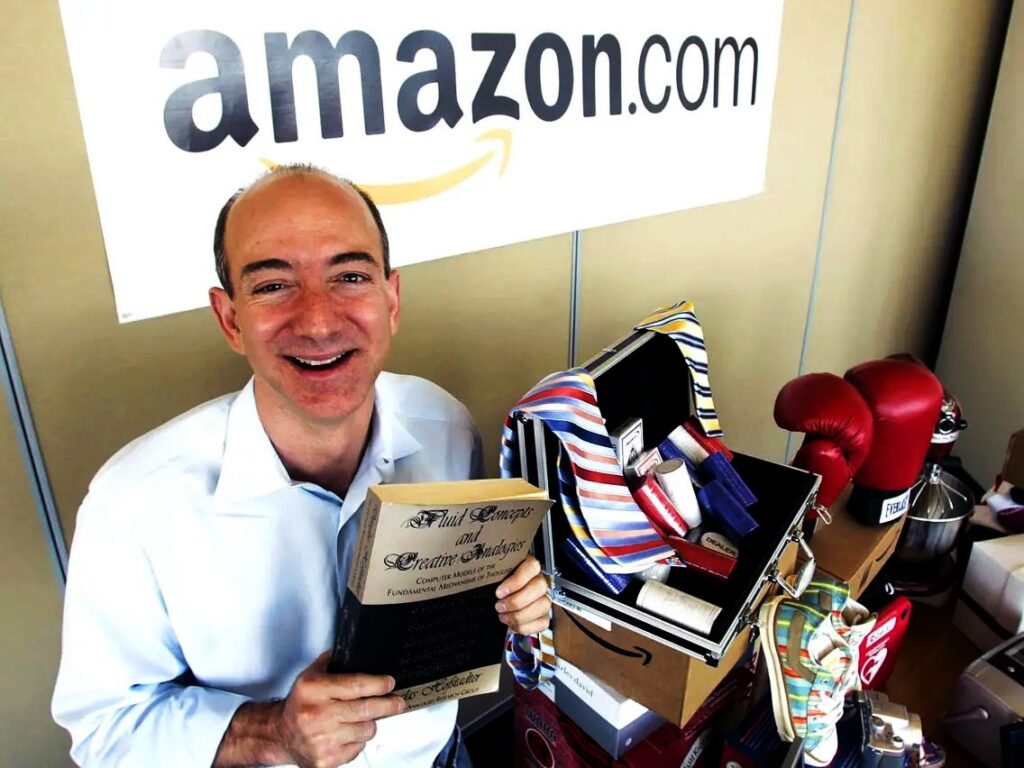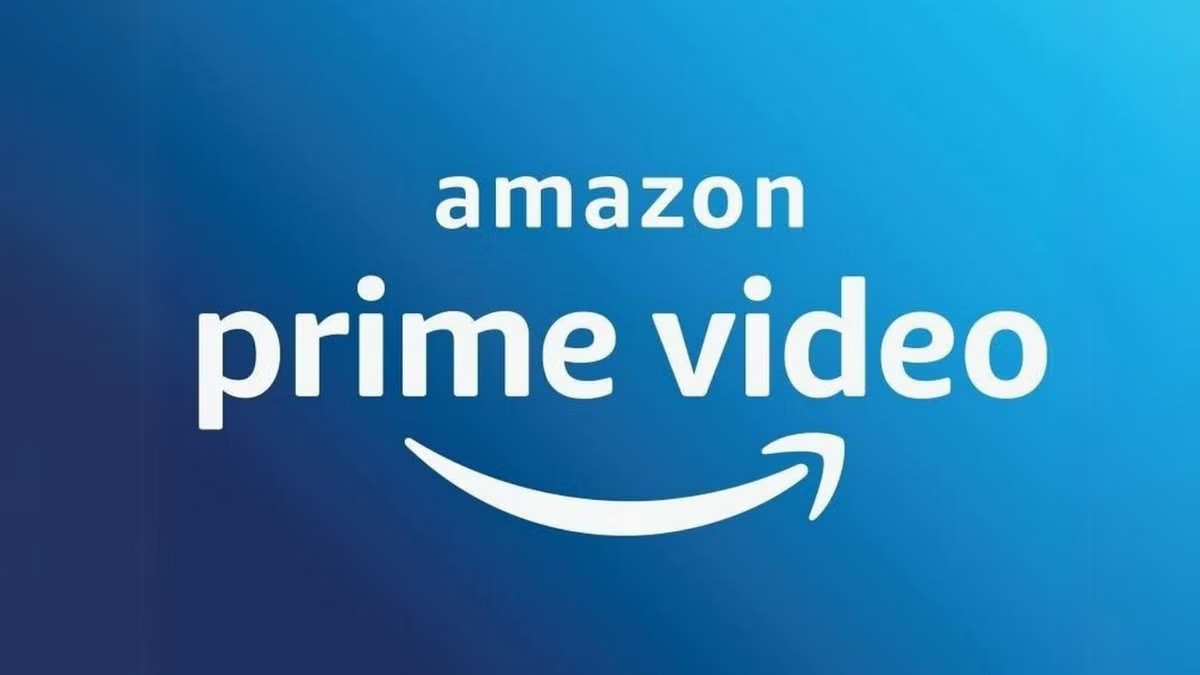The Rise of Amazon: From Garage Startup to Global E-Commerce Giant
Amazon’s journey from a small online bookstore to a worldwide e-commerce and technology giant is an incredible story of innovation, strategic planning, and relentless hard work. Founded in 1994 by Jeff Bezos, the company has become one of the most powerful players in the digital economy.

The Beginnings: From Cadabra to Amazon
In 1994, Jeff Bezos, a computer scientist and Wall Street executive, left his high-paying job to start an online bookstore. Intrigued by the rapid growth of the internet, Bezos saw a big opportunity in e-commerce. He initially named the company “Cadabra,” inspired by the magic word “abracadabra.” However, he changed it to “Amazon” because “Cadabra” sounded too much like “cadaver.”
The name “Amazon” was chosen to reflect Bezos’s ambition for the company to become the largest online retailer, just like the Amazon River is the largest river in the world. Bezos set up the company’s first headquarters in the garage of his rented home in Bellevue, Washington. This location was ideal because it was close to technical talent from Microsoft and the University of Washington, as well as a major book distribution center in Roseburg, Oregon.

The Early Years: Rapid Growth and Expansion
Amazon launched its website on July 16, 1995, offering a wide range of books to customers in the United States and over 45 other countries. Within the first two months, Amazon was selling to all 50 states and generating $20,000 in weekly sales.
Despite early success, Amazon faced significant challenges. The company struggled to make a profit because it invested heavily in infrastructure, technology, and customer acquisition. Amazon reported substantial losses in its early years, finally breaking even in the last quarter of 2001 after a successful holiday shopping season.
However, Bezos remained committed to his vision, and the company continued to grow rapidly. In 1998, Amazon expanded beyond books, adding music and videos to its product offerings. This strategy worked well, as Amazon could use its existing customer base and logistics infrastructure to sell a wider range of products.
Over the following years, Amazon continued to add new product categories, including consumer electronics, home improvement items, software, games, and toys. The company also expanded internationally, acquiring online booksellers in the UK and Germany to establish a presence in Europe.

The Rise of Amazon Web Services
A significant milestone in Amazon’s history was the launch of Amazon Web Services (AWS) in 2002. Initially, AWS provided APIs and web services to developers, allowing them to build applications on Amazon’s e-commerce platform.
Over time, AWS evolved into a comprehensive cloud computing platform, offering services like storage, computing power, and database management. The launch of Amazon Elastic Compute Cloud (EC2) in 2008 and Amazon Simple Storage Service (S3) in 2006 were particularly important. These services allowed companies to rent data storage and computing power from Amazon instead of investing in their own infrastructure.
AWS’s success was a game-changer for Amazon. By leveraging its expertise in building and operating large-scale infrastructure, Amazon offered cost-effective and scalable cloud services. This allowed AWS to quickly become the leading player in the cloud computing industry.
The Launch of Amazon Prime
Another major milestone was the launch of Amazon Prime in 2005. This membership-based service offered customers free two-day shipping within the contiguous United States, along with access to additional benefits like streaming video, music, and e-book lending.
Amazon Prime was a strategic move to increase customer loyalty and boost sales. By offering great value, Amazon attracted many subscribers who then tended to spend more on the platform.

The COVID-19 pandemic further boosted Amazon Prime’s success, as more people turned to online shopping and needed fast, reliable delivery services. By 2021, Amazon reported over 200 million Prime subscribers worldwide, generating billions in revenue.
Expansion into New Verticals and Acquisitions
As Amazon grew, it expanded into new areas and acquired businesses to strengthen its market position. In 2017, Amazon bought the organic grocery chain Whole Foods for $13.7 billion. This acquisition expanded Amazon’s physical retail presence and enhanced its e-commerce and logistics capabilities.
Amazon has also acquired companies like Zappos (an online shoe and clothing retailer), Twitch (a leading live-streaming platform), and Kiva Systems (a robotics company now known as Amazon Robotics). These acquisitions helped Amazon diversify its offerings, improve its technology, and solidify its position in various industries.
The Rise of Amazon’s Consumer Technology
Beyond e-commerce and cloud computing, Amazon has made significant progress in consumer technology. The launch of the Kindle e-reader in 2007 disrupted the traditional publishing industry and made Amazon a leader in the digital book market.
Building on the Kindle’s success, Amazon expanded its consumer technology products to include the Fire tablet, Fire TV Stick, and Alexa-powered Echo smart speakers. These products not only generated revenue but also strengthened Amazon’s ecosystem and increased customer engagement.

Alexa, Amazon’s virtual assistant, has become a central hub for Amazon’s smart home and voice-controlled services. It allows customers to do everything from playing music to controlling smart home devices.
Amazon’s Corporate Culture and Customer-Centric Approach
Amazon is known for its relentless focus on the customer and its willingness to experiment and innovate. This customer-centric approach has been crucial to the company’s success, allowing Amazon to anticipate and meet customers’ evolving needs.
Jeff Bezos instilled a philosophy of “customer obsession” throughout the organization. Senior executives spend time in customer service roles to better understand the customer experience. Amazon also has a culture of data-driven decision-making and encourages employees to experiment, learn from mistakes, and quickly improve successful initiatives.
This culture of innovation and customer focus has kept Amazon ahead of the curve, continuously expanding its offerings and adapting to changing market conditions. From its humble beginnings as an online bookstore to its current status as a global e-commerce and technology powerhouse, Amazon’s story is a testament to the power of vision, execution, and a relentless focus on the customer.
Conclusion
Amazon’s journey from a small startup in Bezos’s garage to a global e-commerce and technology giant is an amazing story of innovation, strategic vision, and relentless hard work. The company’s ability to adapt and expand its offerings while maintaining a strong customer focus has been a key driver of its success.
From launching its online bookstore in 1995 to developing industry-leading cloud computing services and consumer technology products, Amazon has consistently identified and capitalized on emerging market opportunities. Its culture of experimentation, learning from mistakes, and quickly improving successful initiatives has been a hallmark of its corporate culture.
As Amazon continues to grow and diversify its business, its remarkable story of transformation and success will continue to inspire entrepreneurs and business leaders around the world.
More Content:
How did Jeff Bezos’ “regret minimization framework” influence Amazon’s early success?
Jeff Bezos used a simple but powerful tool called the “regret minimization framework” when he was deciding whether to leave his high-paying Wall Street job to start an online bookstore, which we now know as Amazon. Here’s how it works: you imagine yourself at age 80 and think about which decision you’d regret more—staying in your stable job or taking the risk to start something new. For Bezos, the idea of not trying to seize the internet opportunity was the bigger regret, even if it meant potentially failing.
This mindset helped Bezos in several ways:
- Clarity in Decision-Making: It made it easier for him to leave his Wall Street job and start Amazon, despite the risks and short-term sacrifices like losing his annual bonus.
- Long-Term Focus: By thinking about his future self, Bezos could focus on minimizing future regrets rather than just thinking about immediate concerns. This helped him adopt a long-term, customer-first approach from the very start.
- Encouraging Innovation: With a long-term perspective, Bezos and Amazon were more willing to experiment, innovate, and pursue ambitious goals, even if it meant facing initial losses and skepticism. They embraced the idea of “failing fast” to learn and grow in line with their long-term vision.
- Cultural Impact: This regret minimization mindset became a core part of Amazon’s culture, driving the company to stay customer-focused and make bold decisions that might seem risky in the short-term but were beneficial in the long run.
In summary, Jeff Bezos’ “regret minimization framework” was key to Amazon’s early and ongoing success. It allowed the company to take smart risks, maintain a long-term view, and achieve incredible growth and innovation.
